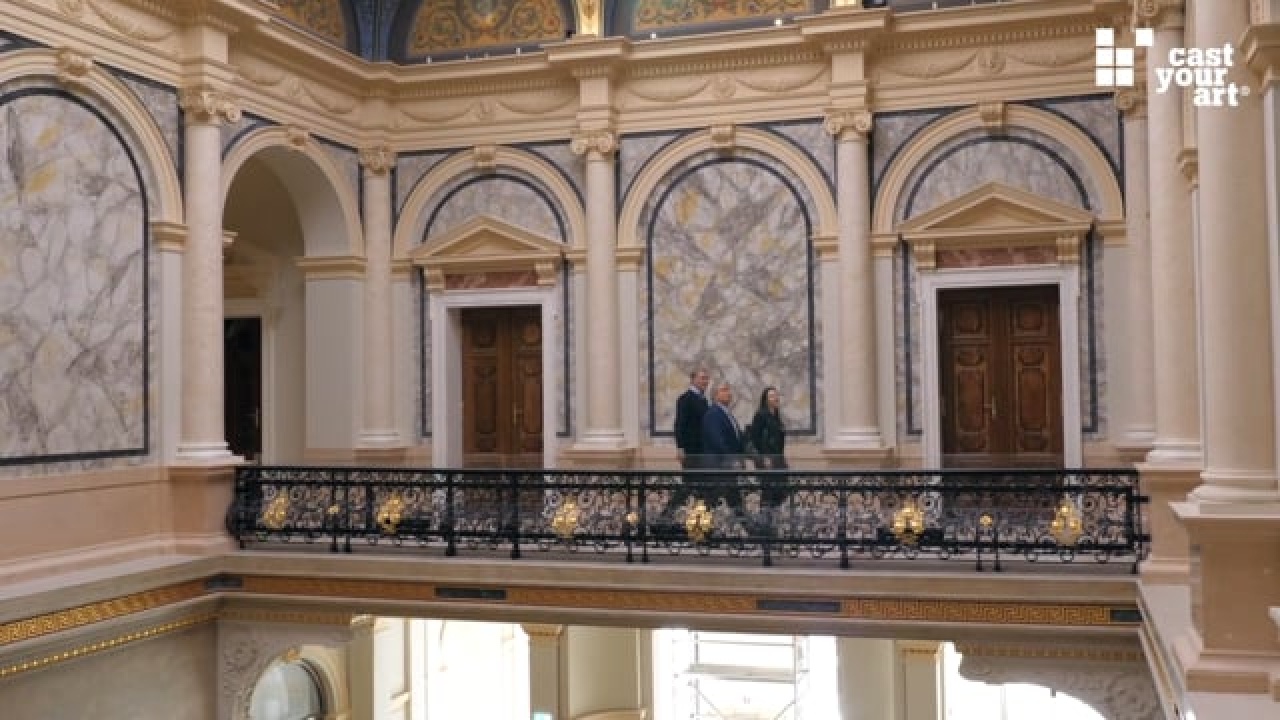Franz Xaver Ölzant - Idea, Process, Form
For the first time, the ZeitKunst Niederösterreich exhibition „Idea-Process-Form“ shows a summary of the complete works of the sculptor Franz Xaver Oelzant.
Undeniably, there is something sensual and organic to his works. They appear like living, changing bodies we can interact and connect with. They are dynamic, powerful and constructive forms in which geometrical rigour is abandoned in favour of organic forms emanating from the material itself - and from the vital force introduced by the artist’s creativity.
By means of this virtual exuberance of materiality, the artist tries to unravel the mysteries of the origins in order to fathom the laws that rule life. Contrary to our ancestors, we live in an environment created by ourselves, increasingly far removed from the natural world. Nature’s complexity escapes us and a sense of any natural order seems far away for a city dweller of nowadays. Nature has been replaced with the overflow of artificial images emitted by our media. Today’s imagery exhausts any possible connection between nature and the reality produced by humanity.
In this unsettling scenario and the artificial chaos surrounding us, we find our only comfort in the truthfulness of art, in the expressivity that permits reconciliation with what is only seemingly under our control, and precedes us in time and space: with nature.
Franz Xaver Oelzant’s creative endeavour to disentangle the mysteries of natural forms and of the material stone is in fact an effort to restore its rights to nature, in this era of visual and virtual chaos. In these objects we can observe a keen interest in the creation and development of forms that are always in close connection with the material and the space into which these objects are inscribed.
Oelzant’s perception of everything that surrounds us is not an abstract archetype; it would be pointless to explain it with theoretical evocations, it is rather something tangible and concrete, like any element of nature that can be perceived empirically.
As if with a scalpel, it seems that Oelzant dissects the interior of a structure in order to analyze its secret dimensions. He demonstrates the internal logic of the form, of the volume and of the angles that permit completing the shape. Exploring the inner structure, he begins to manipulate and dismantle it like a child would do. As physical as they are, upon closer inspection his sculptures nevertheless stir manifold emotions in the viewer.
In today’s deluge if images, where one image is the clone of another, we ask ourselves where these natural beings and shapes with their primitive appearance come from. They are all but passive in their silent presence. It is the artist’s intention to provide us with experiences that point to a pre-technological era, evoking a time where architecture and sculpture was one: prehistory. It is a time when two-dimensional images were rare and the presence of solid objects lent credibility to rationally unexplainable perceptions. Hence Oelzant’s great respect for the intrinsic qualities of the material: density, hardness, elasticity, texture, brightness, weight…in their demonstrative materiality these objects represent the perceptible manifestation of matter.
Oelzant’s sculptures have the character of a proof, indication or an appearance of nature’s characteristics; his descriptive shapes disclose structures bearing witness to the infinite complexity of the natural world.
During long periods of the twentieth century, art tried to reconcile two extremes: culture and nature. It applies to Franz Xaver Oelzant what Jackson Pollock once said when someone advised him to work more after nature: “I am nature” (written by Cem Angeli)
Das könnte Sie auch interessieren

FLORINA LEINSS. Online Eröffnung zur Ausstellung "Split Sight" im STRABAG Kunstforum.
7. May 2021
ALBERTINAmodern. Kunstmäzen Hans Peter Haselsteiner
6. November 2019
Roy Kortick - al fresco
19. November 2008
EGON SCHIELE. From the conservation department of the Albertina museum
6. September 2021
Evan Penny - Re Figured
10. February 2012
JOHANNES HEUER. Painting Needs
9. March 2022
CLAUDE MONET. Teaser zur Albertina Ausstellung
25. September 2018
